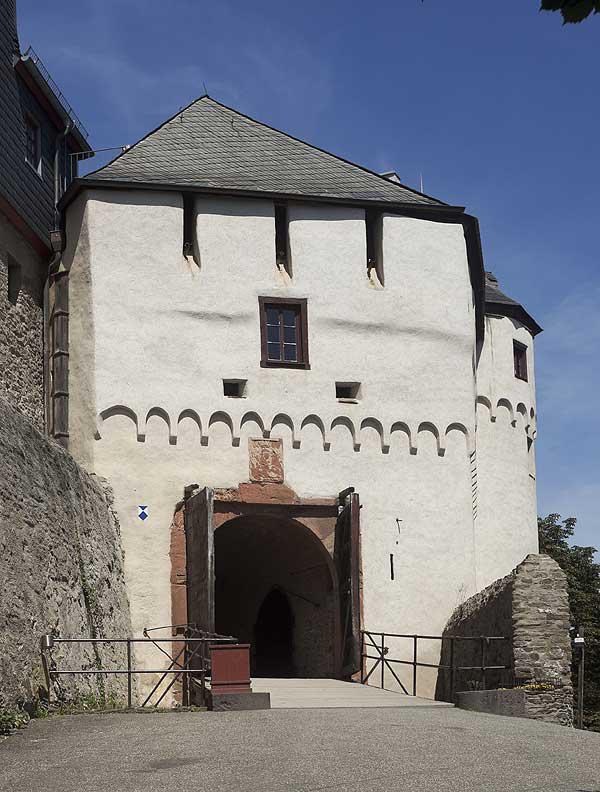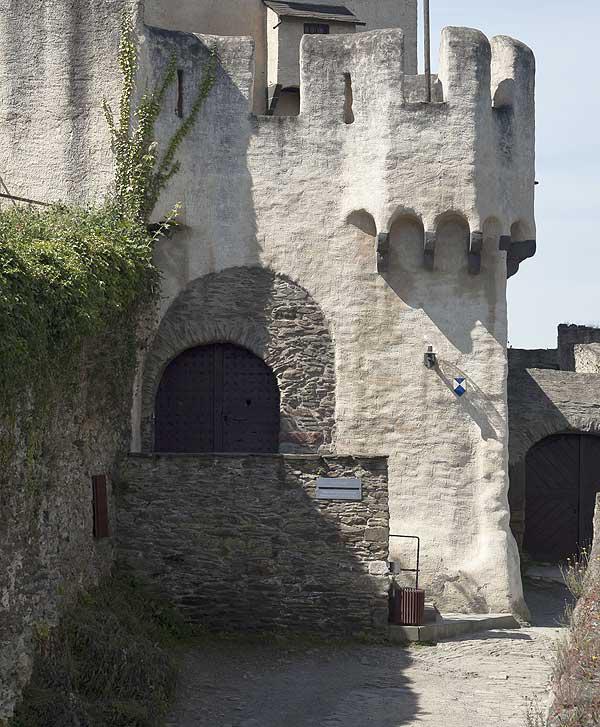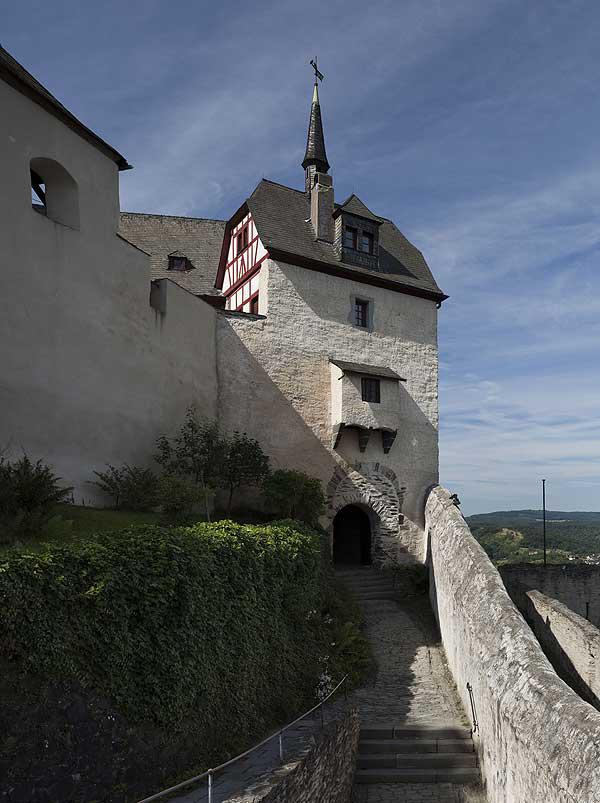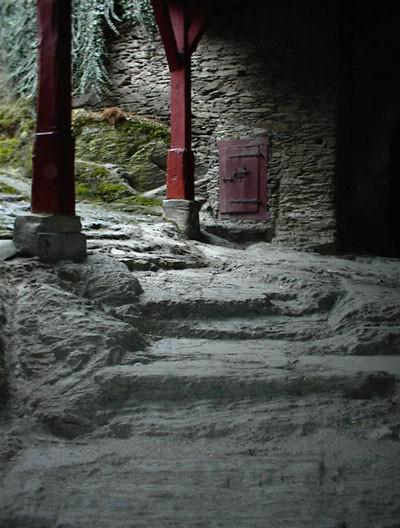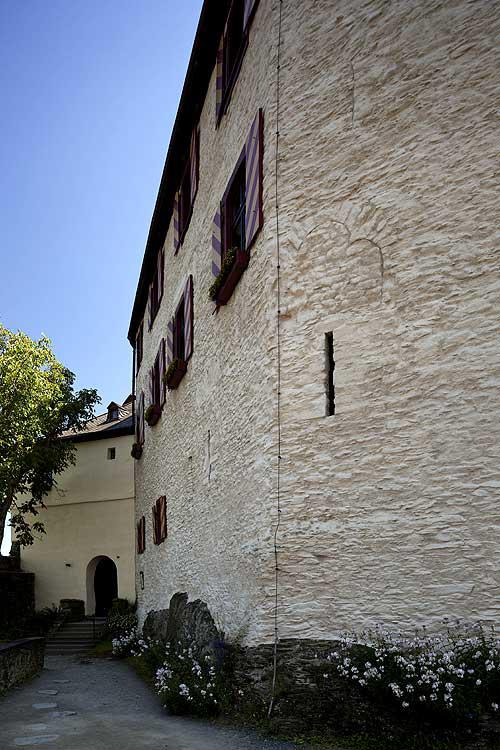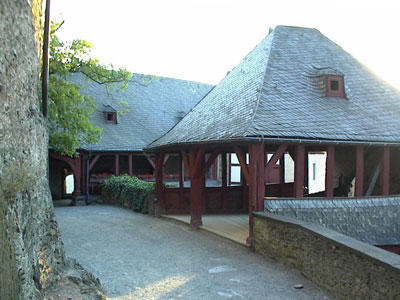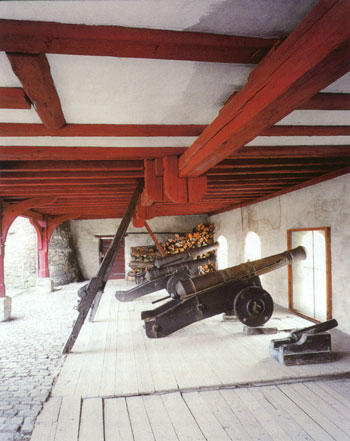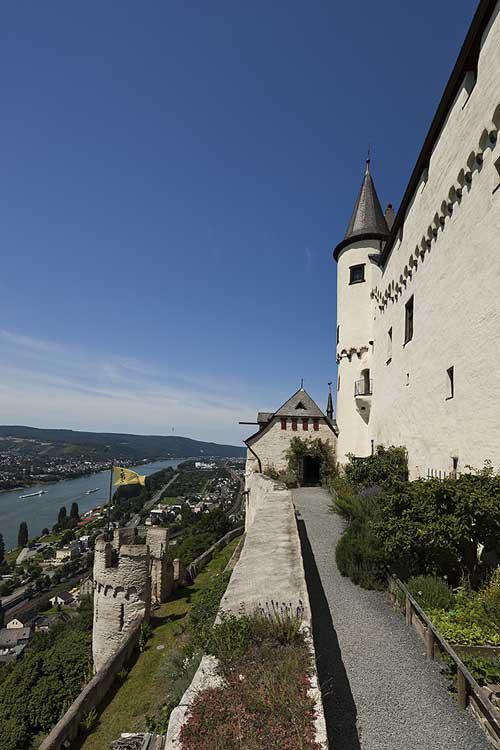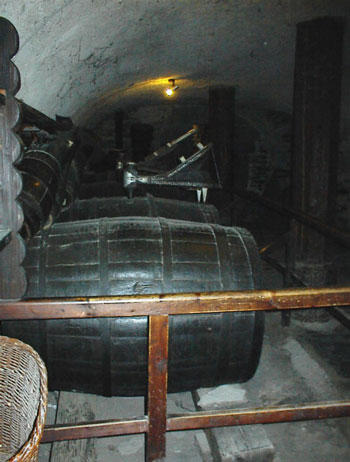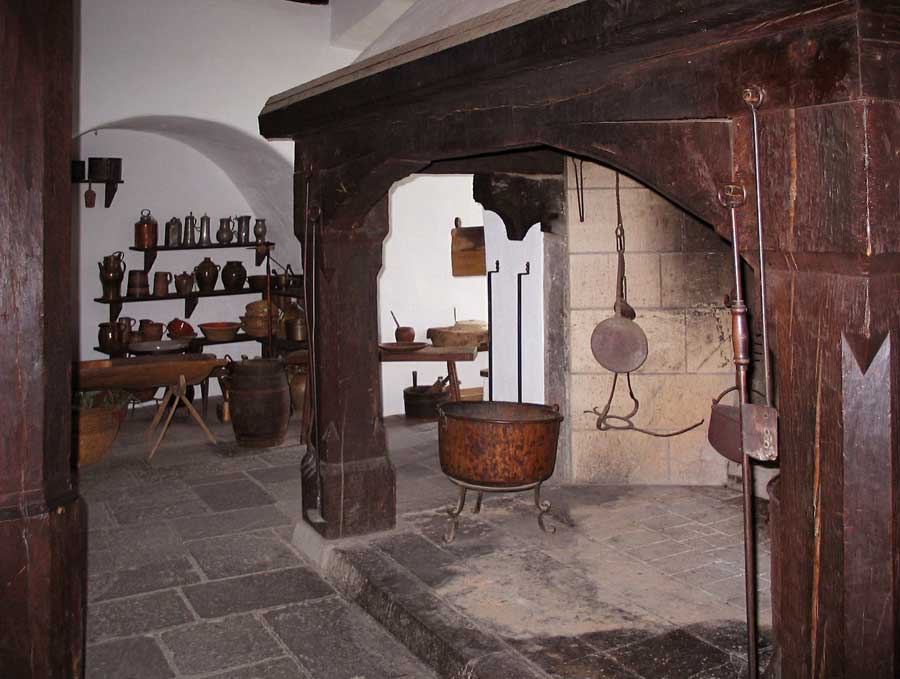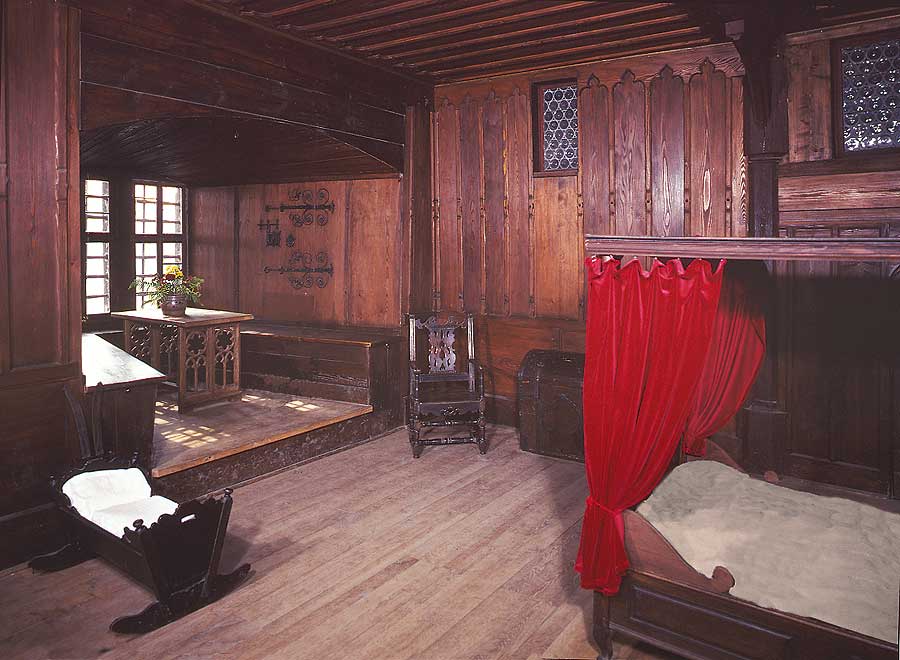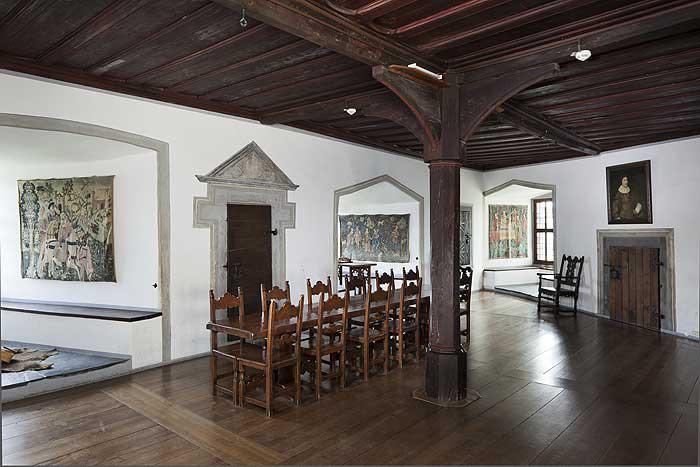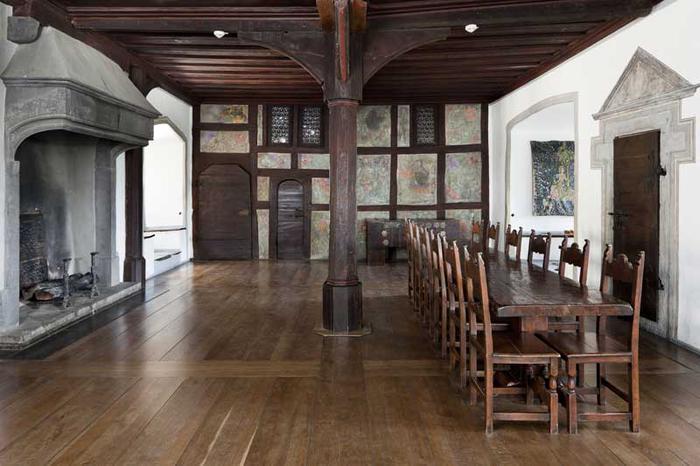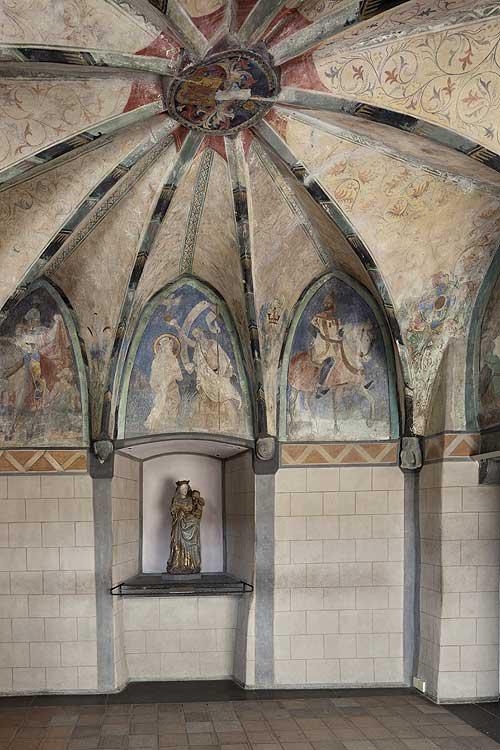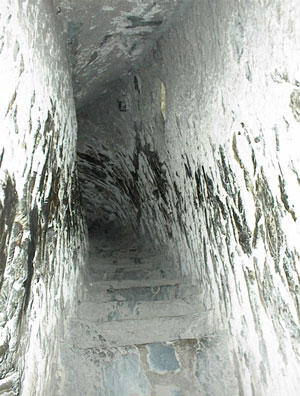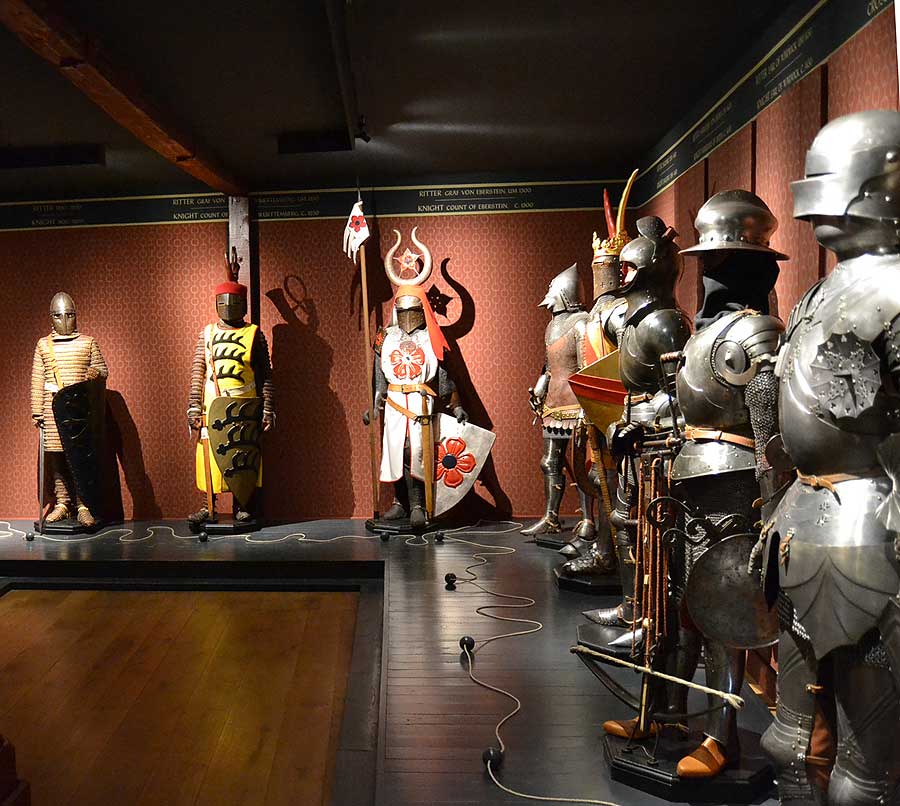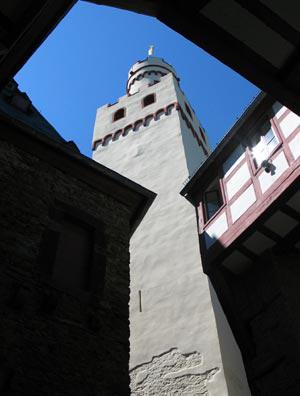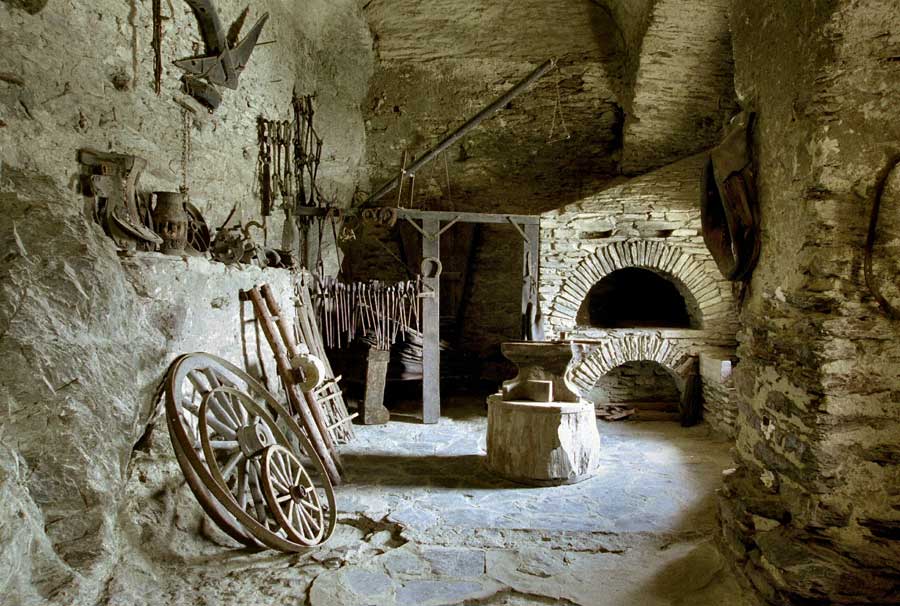Circuit
Arrow Slit Gate
Above the doorway of the third gate, the "Schartentor" (Arrow Slit Gate), there is a machicolation, a little oriel from which the defenders would throw stones onto attacking enemies' heads if they had advanced this far. The gateway in the "Vogtsturm" (Steward's Tower) was reduced in size towards the end of the 17th century.
Riders' Stairway
We have reached a wall display showing the succession of the various owners of Marksburg Castle and their coats of arms, starting with the Counts of Eppstein and ending with the Deutsche Burgenvereinigung (German Castles Association).
After climbing the "Riders Stairway", carved out of the bedrock centuries ago, we begin our walk through the castle.
Romanesque Palas
We are now in front of the oldest main residential building, the Romanesque Palas. It dates back to the year 1239 and underwent various changes in the following years. Today it houses the offices and the apartment of the general manager of the Deutsche Burgenvereinigung (German Castles Association). The Palas belongs to the areas of the castle that aren't part of the tour. Those parts were altered from the inside after the Middle Ages, when soldiers inhabited the castle for centuries.
Small Battery
The artillery battery in front of the Palas was added in 1711, today it includes the copy of one of the oldest firearms of that type in Germany, a cannon from 1450.
During archaeological excavation work, foundation walls of a chapel which was demolished in 1588 were discovered in Marksburg Castle's battery yard. The walls could not be reliably dated and may be older than the castle itself.
An excavation report online (in German) was published in the scientific journal BURGEN UND SCHLÖSSER.
Great Battery
The large cannons in this "Great Battery" are aimed at the Rhine river. According to weight we differentiate between front-loading 6-pounder and 12-pounder cannons. With a reach of approx. 1000 meters, the soldiers were able to secure the Rhine valley in its whole width. The older part of this military construction was erected in 1589, the latter half in 1711.
Garden
We continue into the Upper Bailey that boasts a unique medieval herb garden consisting of two patches of about 150 plants known in Europe in the Middle Ages. Most of them are important medical plants and spices, but some like the mandrake or the Devil's snare were said to be used by witches, while others like the deadly nightshade and the hemlock are very poinsonous.
Great Hall
The adjoining room is the impressive Great Hall, the very heart of courtly life. As a combined living and dining room, leisure time was spent playing chess or making music while rare entertainment as provided by travelling singers who would also spread news and gossip. A small passage through he outer wall leads up to the medieval toilet, a privy.
Chapel
Next we enter the 14th century chapel, part of the chapel tower, with its beautifully painted walls and ceilings. Small at first glance, we have to bear in mind that the chapel would only have been used by the noble family for daily prayers and services. In on of the niches, we can see a statue which is a copy of a 15th century Rhenish Virgin Mary.
Armoury
Our next stop is one of the tour's highlights: the "Gimbel Collection", a display of twelve life-sized figurines from 1880 which demonstrates the changes made to armour and weaponry from ancient to early modern times. The armour on display consists of extremely detailed replicas as well as original pieces. Artefacts from excavation work carried out in and around the castle grounds - coins, glass, arrow heads, dice - are on display in a glass cabinet.
Keep
In the middle of the courtyard we are greeted by the narrow keep – not so much a residential tower but mainly used as a watchtower and a status symbol. The lower part was built in 1239, the top part was added in 1468.
Due to the extremely narrow and steep uneven stairway in its centre it is simply not accessible for visitors to climb the tower - there is no emergency exit whatsoever and people can't pass each other on the stairs at all.


